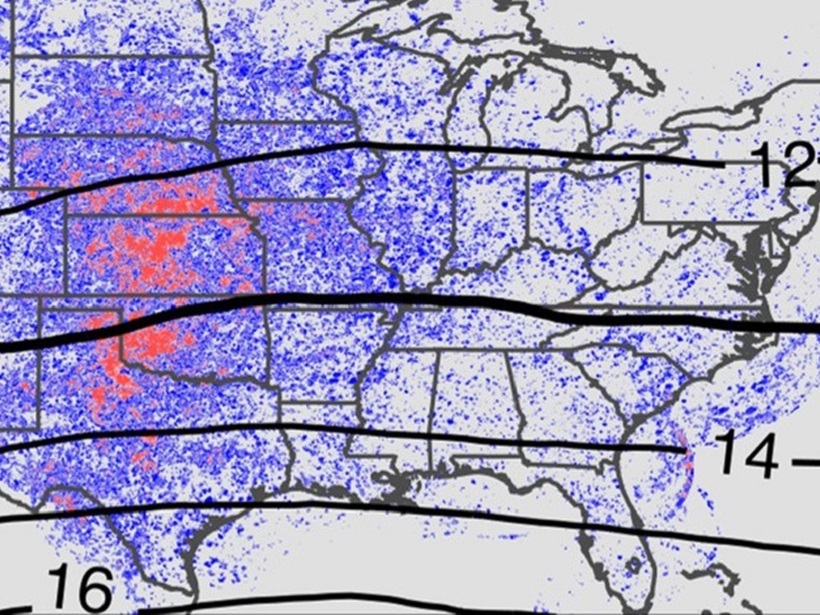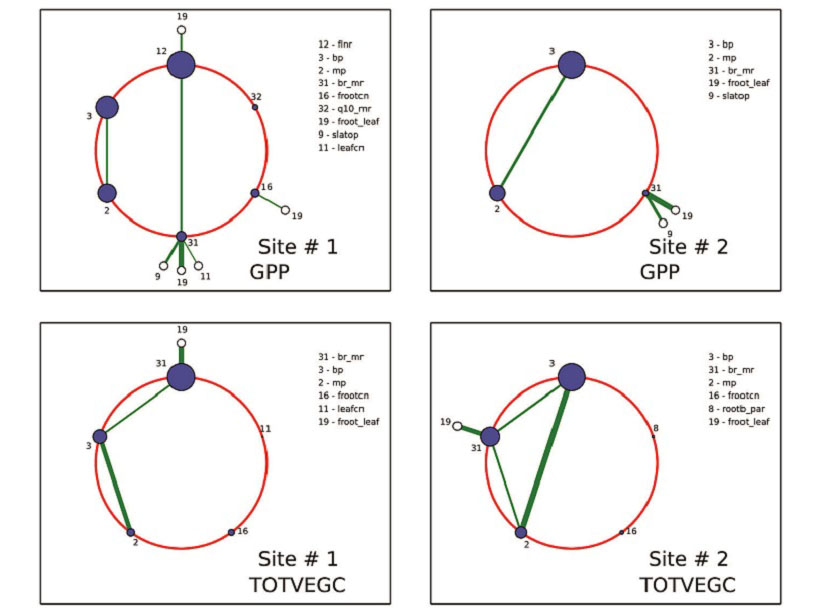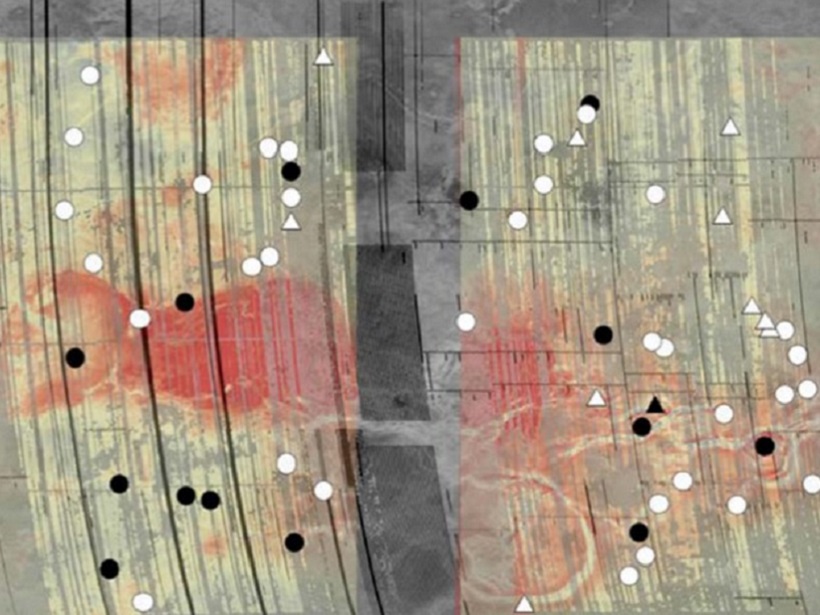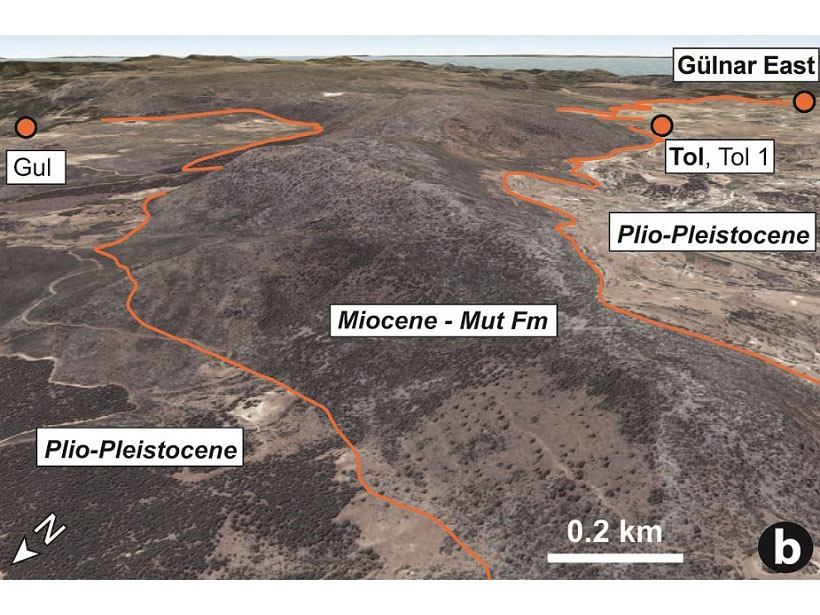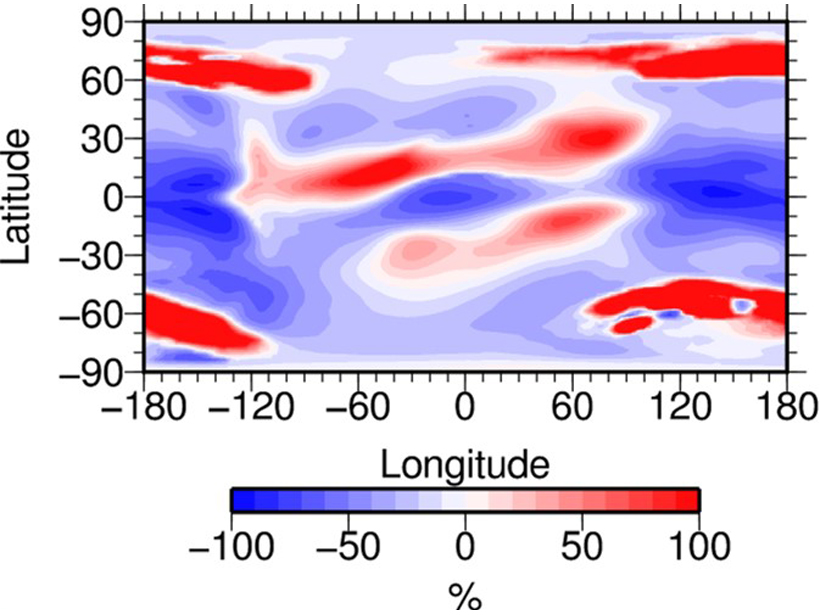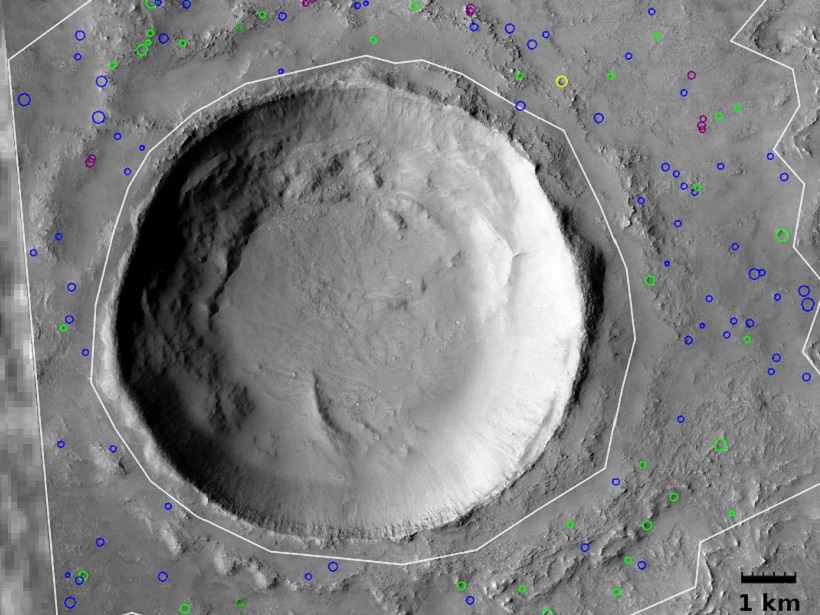Cobalt may have played in important role in the early development of life on Earth, and been more available to ancient life than modern due to the higher mafic composition of early continents.
Editors’ Highlights
Continental Convection Reaches New Highs
Ten years of high-resolution gridded NEXRAD radar data provide a new data set to quantify tropopause-overshooting convection over the continental United States.
Chaos Beneath a Calm Sea
Seismic data help reveal fine-scale wave breaking, instability and turbulence in the ocean interior.
A Powerful New Tool to Analyze and Calibrate Earth System Models
Polynomial chaos and Bayesian compressive sensing are applied to a land surface model to understand how large numbers of tunable parameters interact and may be optimized.
Elevated Heat Flow at Coronae on Venus
Enigmatic surface features on Venus called coronae are important for how Venus loses heat, and measurement of surface flexing around these features indicates higher heat flows than on Earth.
Tracking Deep-Earth Processes from Rapid Topographic Changes
Rapid elevation-rise in Turkey, tracked by marine sediments that now sit at 1.5 km in elevation, is linked to deep-Earth processes that can explain short-lived, extreme rates of topographic change.
Earth-like Oscillations Detected in Saturn’s Stratosphere
By comparing Cassini observations spanning ten years, Saturn’s equatorial oscillation is shown to have similarities to Earth’s Quasi-Biennial Oscillation and Semi-Annual Oscillation.
Untangling Sediment Transport Through River Networks
A stochastic sediment routing model for river networks is inverted to determine sediment source areas based on point observations of grain size and sediment flux at the basin outlet.
Modeling Geospace: Quantifying the Known-Unknowns
Imperfect knowledge of high-latitude forcing of the coupled ionosphere-theremosphere system translates into uncertainty in the low-latitude and midlatitude response to a geomagnetic storm.
Long Term Preservation of Subsurface Ice on Mars
Layered-ejecta craters on Mars that are associated with impacts into rock mixed with volatiles have been formed throughout the planet’s history indicating the long-term preservation of subsurface ice.


